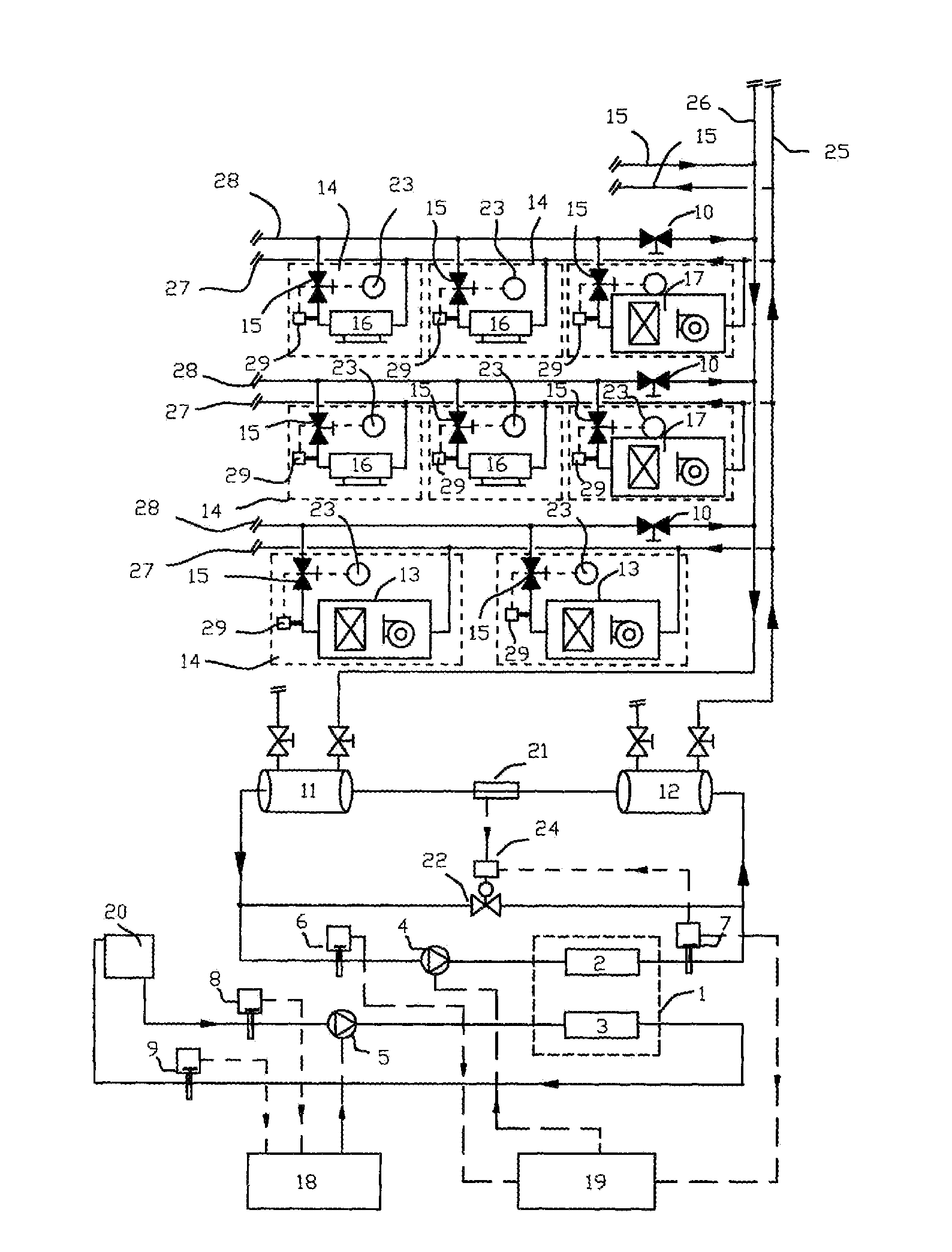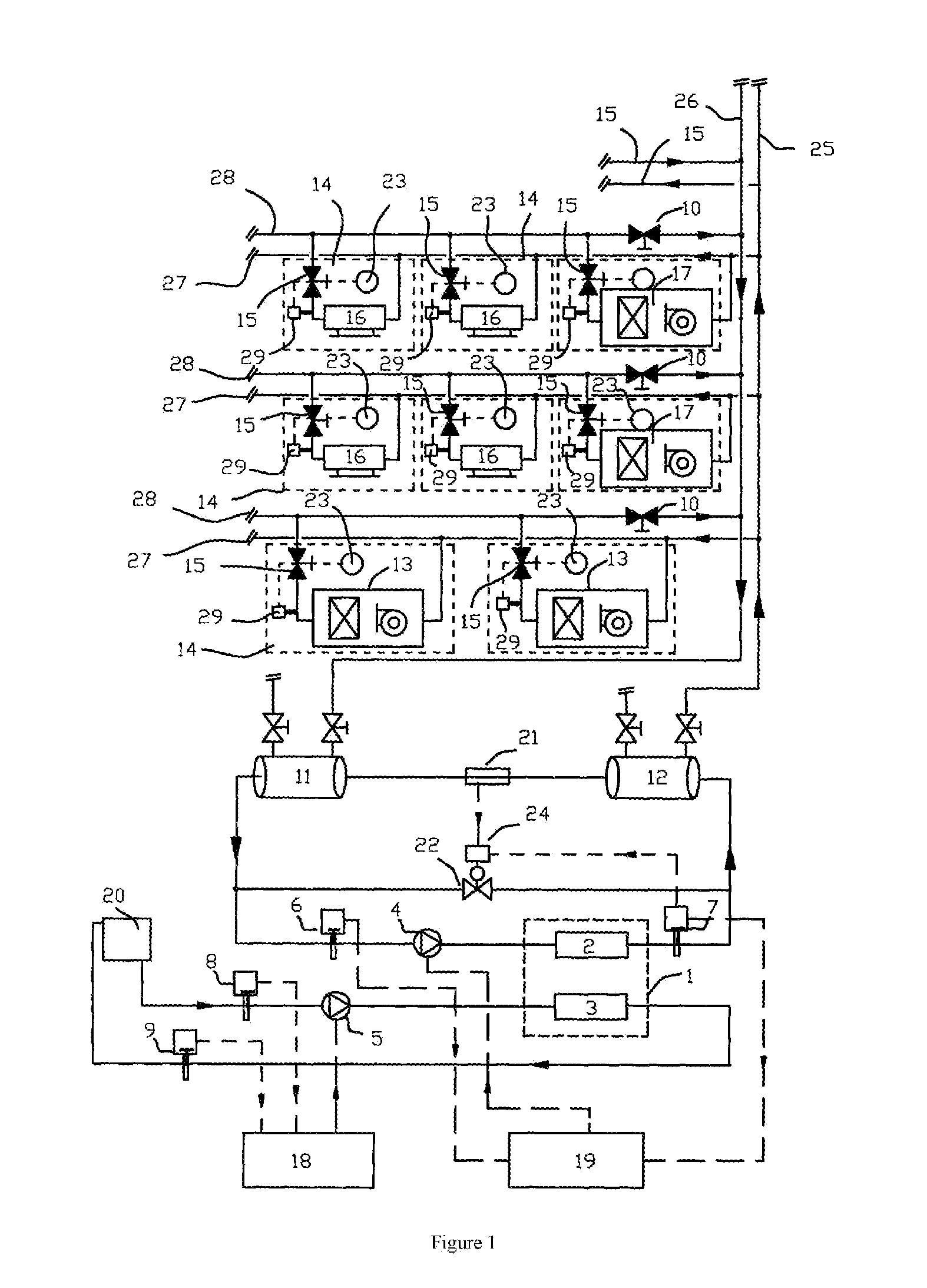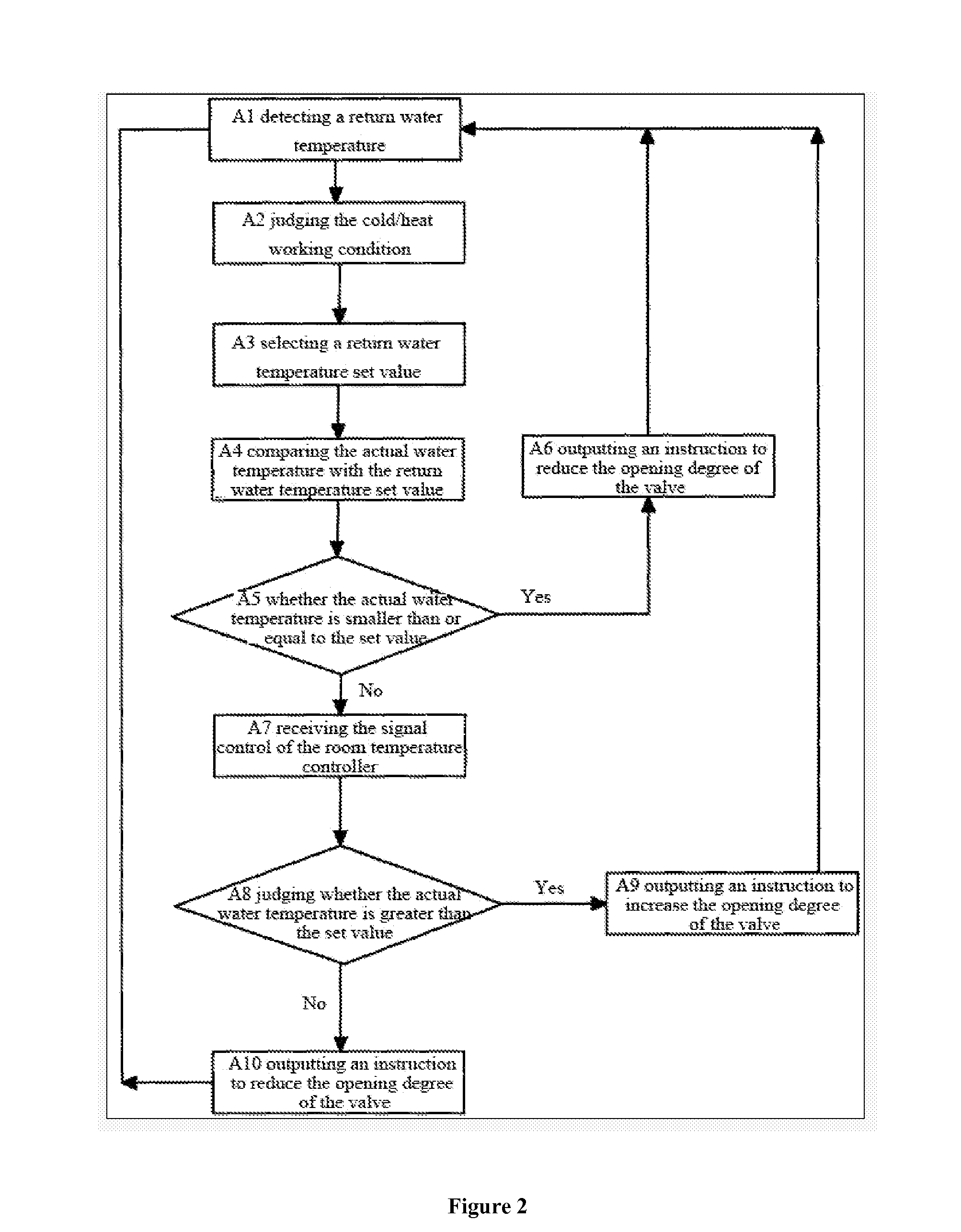Central air-conditioning system and control method thereof
- Summary
- Abstract
- Description
- Claims
- Application Information
AI Technical Summary
Benefits of technology
Problems solved by technology
Method used
Image
Examples
embodiment 1
[0032]Refer to FIG. 1. A central air-conditioning system comprises a refrigerating unit 1, a cooling water loop, a cooling water pump 5 arranged on the cooling water loop, a cooling water pump frequency converter 18, a circulating water loop, a circulating water pump 4 arranged on the circulating water loop, a circulating water pump frequency converter 19, a plurality of circulating water branches arranged in parallel on the circulating water loop as well as temperature controllers 23, tail-end fan coils 16, fresh air units 17 and air handling units 13 arranged in rooms 14, the circulating water loop includes a water inlet manifold 25 and a water return manifold 26, and each circulating water branch includes a water inlet branch pipe 27 and a water return branch pipe 28; the tail-end fan coils 16, the fresh air units 17 and the air handling units 13 are arranged in parallel on the circulating water branches respectively; a regional flow balancing valve 10 for controlling the flow of...
embodiment 2
[0046]Refer to FIG. 3. A central air-conditioning system comprises a refrigerating unit 1, a cooling water loop, a cooling water pump 5 arranged on the cooling water loop, a cooling water pump frequency converter 18, a circulating water loop, a circulating water pump 4 arranged on the circulating water loop, a circulating water pump frequency converter 19, a plurality of circulating water branches arranged in parallel on the circulating water loop, as well as temperature controllers 23, tail-end fan coils 16, fresh air units 17 and air handling units 13 arranged in rooms 14, wherein the circulating water loop includes a water inlet manifold 25 and a water return manifold 26, and each circulating water branch includes a water inlet branch pipe 27 and a water return branch pipe 28; the tail-end fan coils 16, the fresh air units 17 and the air handling units 13 are arranged in parallel on the circulating water branches respectively; a regional flow balancing valve 10 for controlling th...
embodiment 3
[0060]Refer to FIG. 5, which shows another central air-conditioning system, comprising a refrigerating unit 1, a cooling water loop, a cooling water pump 5 arranged on the cooling water loop, a cooling water pump frequency converter 18, a circulating water loop, a circulating water pump 4 arranged on the circulating water loop, a circulating water pump frequency converter 19, a plurality of circulating water branches arranged in parallel on the circulating water loop, as well as temperature controllers 23, tail-end fan coils 16, fresh air units 17 and air handling units 13 arranged in rooms 14, wherein the circulating water loop includes a water inlet manifold 25 and a water return manifold 26, and each circulating water branch includes a water inlet branch pipe 27 and a water return branch pipe 28; the tail-end fan coils 16, the fresh air units 17 and the air handling units 13 are arranged in parallel on the circulating water branches respectively; a regional flow balancing valve 1...
PUM
 Login to View More
Login to View More Abstract
Description
Claims
Application Information
 Login to View More
Login to View More - R&D
- Intellectual Property
- Life Sciences
- Materials
- Tech Scout
- Unparalleled Data Quality
- Higher Quality Content
- 60% Fewer Hallucinations
Browse by: Latest US Patents, China's latest patents, Technical Efficacy Thesaurus, Application Domain, Technology Topic, Popular Technical Reports.
© 2025 PatSnap. All rights reserved.Legal|Privacy policy|Modern Slavery Act Transparency Statement|Sitemap|About US| Contact US: help@patsnap.com



